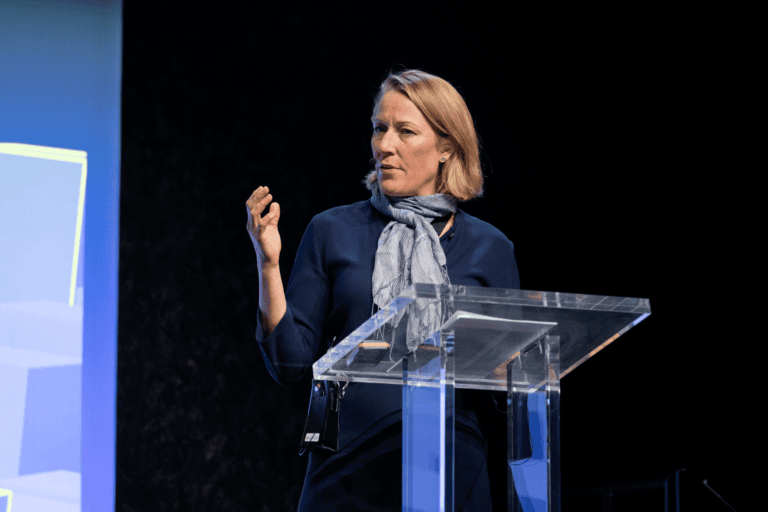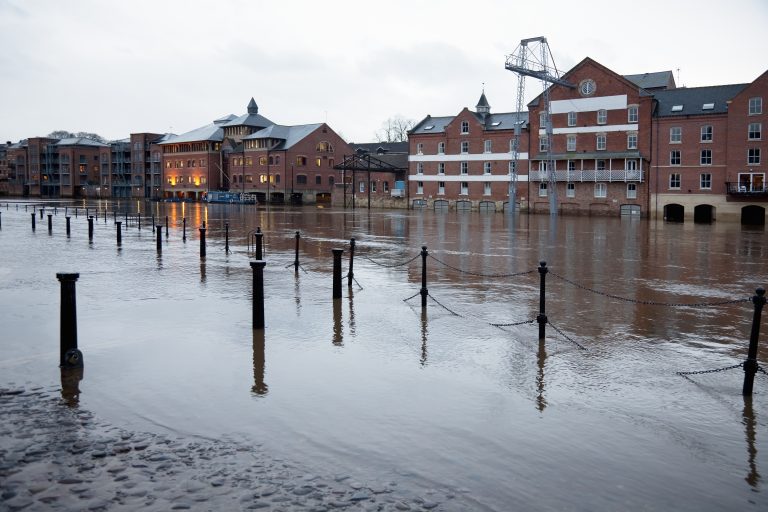Climate Adaptation at COP27: How Climate Intelligence Can Unlock Private Sector Action

Setting the scene: The climate adaptation action we needed yesterday
Extreme-weather events in 2022 have pushed climate adaptation to the top of the COP27 agenda. Each new disaster brings the consequences of increasing climate volatility into sharper focus. With the impacts of climate change mounting faster than previously anticipated, public and private sector investment is needed to scale up climate adaptation interventions as quickly as possible
With more attention on the ways the world must adapt to climate change, the private sector is beginning to step up to the challenge. Disclosure frameworks like the Task Force on Climate-Related Financial Disclosures (TCFD) have undoubtedly helped companies to identify and analyze climate risks in a more standardized way. However, the disruptions that are already occurring due to climate-related disasters are pushing companies to move beyond identification and analysis of climate risks and toward action and integration of climate risks into business strategies.
At COP27 in Sharm el-Sheikh, which intends to focus on the experiences of developing countries facing the most severe impacts of climate change, governments are considering ways to increase support for climate adaptation solutions. Even so, businesses can’t afford to wait for government commitments or increased regulations to begin taking action. Climate adaptation plans grounded in science and powered by technology are a priority now. Climate intelligence can facilitate and accelerate this action by ensuring that adaptation strategies are informed by comparable, shareable, actionable insights.
Corporate climate disclosures are paving the way for actionable adaptation
Thanks in large part to efforts like the TCFD, an initiative largely led by the private sector, huge progress has been made in developing the language around physical and transition climate risks and in helping businesses analyze and integrate climate risks into the fabric of their organizations.
Over the past year in particular, regulators have sought to require and standardize TCFD-like disclosures in response to investor demands for more consistent and comparable information. Beyond investors, other stakeholders also want to understand what’s really behind the corporate Net Zero commitments that have proliferated. One of the big announcements at COP26 was the creation of the International Sustainability Standards Board, an effort to consolidate and harmonize disclosure frameworks into one global standard. Standardization is one of the key mechanisms we need to move from ambition to action.
Learn more about measuring and reporting against the TCFD framework here.
Reporting and disclosure standardization is a necessary but intermediate step. As discussed in the latest TCFD Status Report, this information needs to be more decision-useful for the financial sector and companies themselves to take action toward greater resiliency across sectors. Simply meeting reporting requirements is not enough by itself. Fortunately, these requirements have spurred the emergence of new technologies that are advancing the ways that companies analyze, report, and engage on their climate risk, and these advancements are enabling organizations to move from compliance to action to both mitigate the climate impacts on their business and to pursue new opportunities in climate adaptation innovation.
Climate intelligence is the missing piece
Until recently, understanding exactly what, where, and when climate risks exist and how to mitigate them has been a challenge for companies. Thanks to leaps in technology, machine learning and climate science, we now have this critical capability at our fingertips. At Cervest, we call this climate intelligence (CI), and it’s essential for any organization looking to build resilience, stay competitive, and protect their bottom line.
The physical impacts of climate change pose business risks in the forms of supply chain disruption, labor shortages, declined productivity, and higher costs of capital. We can look at the pharmaceutical industry as a key example of the importance and application of CI. The pharmaceutical industry is highly vulnerable to the effects of climate change. Disruptions in the production or distribution supply chains have enormous consequences for their businesses and the lives of those who depend on their products. In addition to the work to decrease the industry’s emissions footprint, it’s vital that pharmaceutical companies take steps to understand the physical risks facing their built assets that their businesses depend on.
With economic losses from natural disasters estimated at $343 billion in 2021, businesses cannot afford to wait to implement business-critical adaptation strategies. They must act to prepare the assets they own and manage for climate impacts that will continue to intensify in the decades ahead. More and more companies are using CI to determine and prioritize adaptation decisions, and because CI is designed to be shareable, multiple teams, regions, and departments can drive coordinated adaptation programs across interdependent assets. With this shared view of climate risk, businesses and governments can coordinate their plans to adapt the critical assets that businesses and communities alike depend on, such as utilities and health infrastructure.
Enabling action beyond COP27
With governments, companies, and NGOs working to build momentum at COP27 for a bolder global adaptation agenda, the year ahead holds potential for unprecedented collaboration on adaptation enabled by CI. Climate risk disclosures have given way to significant progress within the private sector to integrate climate risk into their future strategies, and recent extreme weather events have underscored the challenges and losses of climate change in a concrete way. By putting climate intelligence at the core of climate decision-making, we can rapidly scale up effective, targeted interventions that prepare businesses and communities for a resilient, low-carbon world. Simply put, the sustainable development of economies and societies depends on climate-aligned decision-making at every turn.
This blog was written by Dr Helen Beddow, at Cervest. A UKGBC Member specialising in Climate Intelligence. Learn more about their climate intelligence product, EarthScan™.
Learn more about the built environment’s adaptation to Climate Crisis here.
Related
Every fraction of a degree Centigrade is worth a million actions – Julie Hirigoyen’s reflection on COP27

UKGBC calls on government to keep 1.5C alive

Building Resilience: Climate change adaptation in the built environment

Reflections on Adaptation, Loss & Damage Day at COP26

